Canyon has shifted its do-it-all trail bike from 27.5in wheels to 29in hoops for the first time since 2014, with the new Spectral enjoying the roll-over and cornering capabilities that the bigger wheels bring.
Along with larger wheels comes a completely new geometry that features, as you might expect, longer reaches, slacker head angles, shorter seat and head tubes, and a low bottom bracket – all good in my eyes.
Its engineers have concentrated on optimising the strength to weight ratio of the bike, with completely new tube profiles and lay-ups, resulting in a drop of 200g, while maintaining and boosting stiffness in the right areas.
My Spectral CF 29 8.0 comes with a 160mm Fox fork up front, along with a piggyback shock. This gives it a burlier build than the 150mm travel options on the 7.0 and 9.0, which come with a lighter-weight RockShox Pike fork and single can shock. Click here for a full run-down on the new Spectral.
Canyon Spectral CF 29 8.0 frame and suspension details
The Spectral CF has a carbon construction, front and rear. It is Canyon's standard carbon, rather than the more expensive and lighter CFR version, but that may come in the future.
It complies with Canyon's Category 4 testing protocol – basically the frame is rated for anything up to EWS enduro racing – and, as such, it should be strong enough for any trail riding you're likely to throw its way.
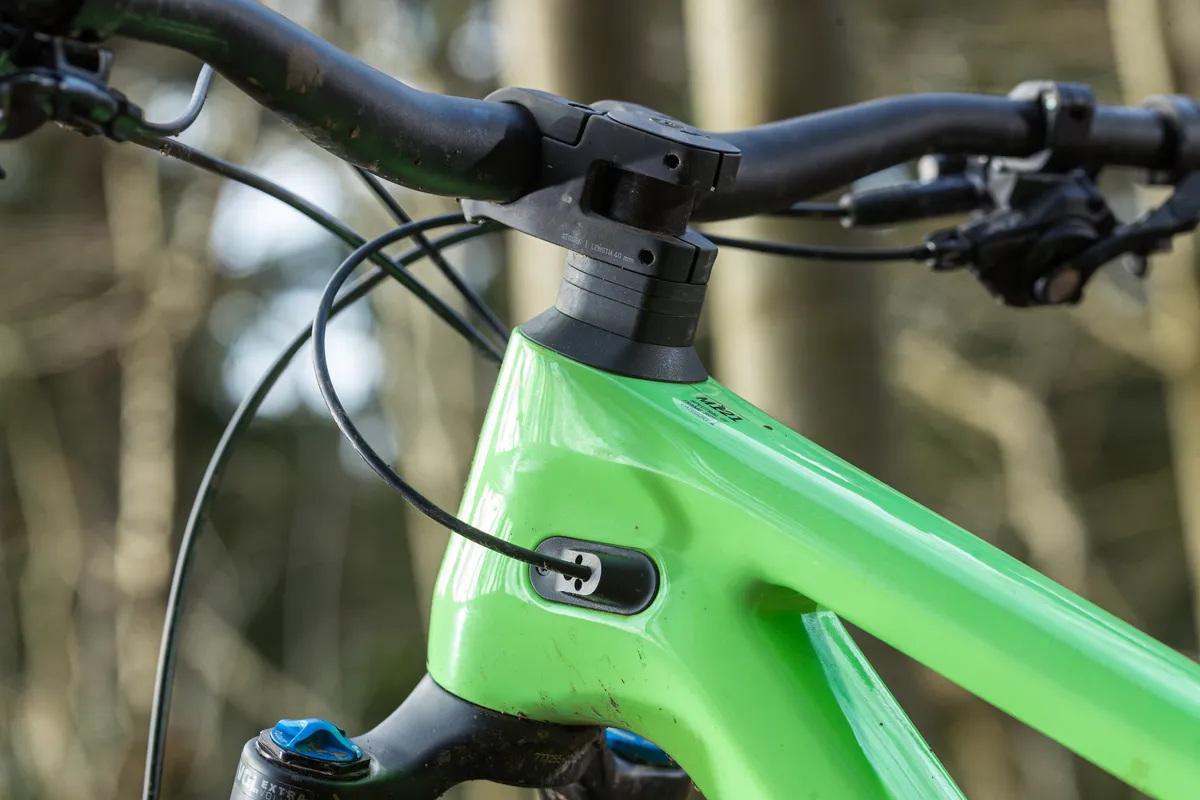
Canyon has clearly spent plenty of time working on the frame’s detail. Gone is the knock-block system of old, meaning bars are unimpeded as they spin.
The cables route internally and are fully-guided all the way to the rear, with bolted entry and exit points, as well as rubber baffles to keep mud and water ingress at bay.
The chainstay protector is designed to reduce noise, as is the rubberised inside of the integrated chainguide.
The down tube’s shape has been straightened, reducing the bend in its belly. This gives more room for a 600ml bottle under the shock and also aids the strength to weight ratio.
I also like the position of the suspension pivot bolts. Bar the driveside chainstay pivot, they’re all located on the non-driveside of the bike, meaning stripping a bike down should be nice and easy.
Canyon has employed its Triple Phase Suspension ideology to the suspension kinematic. However, it's updated it on this generation Spectral to improve both pedalling and big-hit capabilities.
The trade-off between anti-squat and pedal kickback can be tricky; more anti-squat gives improved pedalling feeling, but can lead to more feedback through the pedals on larger impacts.
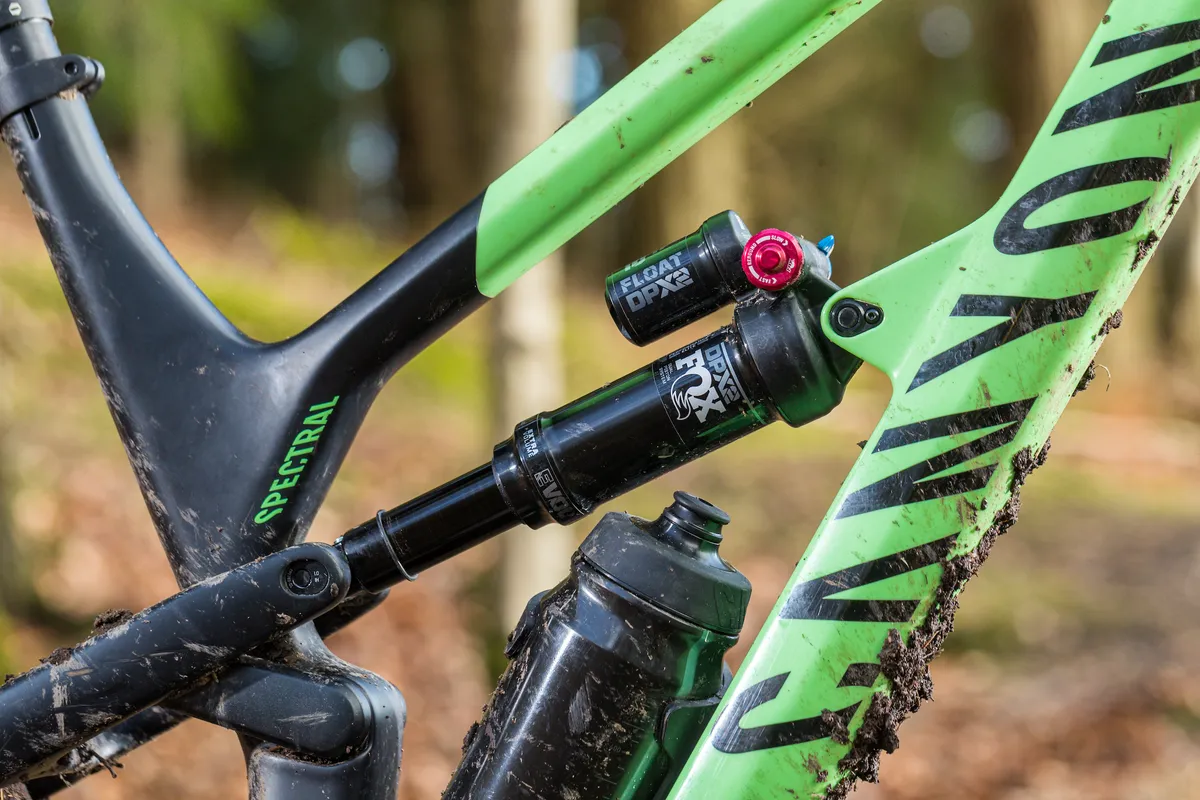
Canyon has increased the anti-squat in the first half of the travel when compared to the previous generation Spectral. This means it should pedal better than before.
However, it's then tweaked the suspension, so that on larger hits the anti-squat is a lot lower, giving less kickback.
Canyon Spectral CF 29 8.0 geometry
As mentioned, the Spectral’s geometry has been bought thoroughly up to date. This means that it has been given a longer reach, slacker head angle, steeper seat angle and shorter head and seat tubes.
Canyon recognises that riders are looking for increased capability from their trail bikes these days (which also accounts for the shift to 29in wheels), so by lengthening and slackening the geometry of the bike, it should be happier on steeper, looser and more technical terrain.
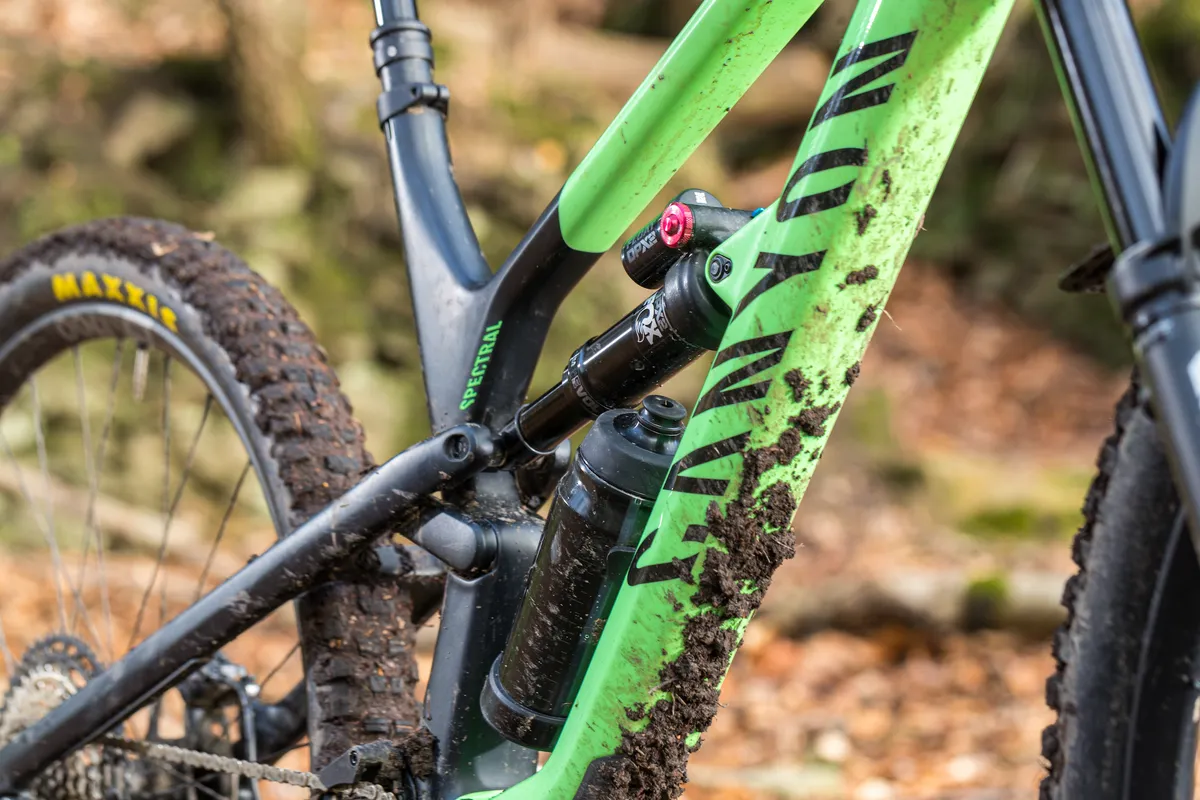
While the geometry is contemporary, it’s not especially radical. For a brand such as Canyon, this makes sense, and with a shape that doesn’t surprise you, it’s a very natural feeling bike to jump on and ride, and shouldn’t need much adjustment to your riding style to get the most out of it.
There is a geometry flip chip which steepens the angles by 0.5 degrees and adds 8mm to the bottom bracket height, though for testing (and we suspect most people will do the same) I largely kept it in its low setting.
| Size | Small | Medium | Large | Extra Large |
|---|---|---|---|---|
| Reach | 435 | 460 | 485 | 510 |
| Stack | 611 | 620 | 629 | 638 |
| Head tube angle | 64.5 | 64.5 | 64.5 | 64.5 |
| Seat tube angle | 76.5 | 76.5 | 76.5 | 76.5 |
| Seat tube length | 395 | 430 | 460 | 490 |
| BB height | -36 | -36 | -36 | -36 |
| Wheelbase | 1193 | 1222 | 1251 | 1281 |
| Chainstay length | 437 | 437 | 437 | 437 |
| Top tube | 582 | 609 | 636 | 663 |
| Standover | 755 | 762 | 767 | 775 |
Canyon Spectral CF 29 8.0 specifications
Canyon is offering two builds of the Spectral CF 29: the 7.0 and 9.0 builds receive a 150mm travel RockShox Pike on the front, paired with a single can shock at the back, SRAM drivetrains and slightly faster rolling tyres. The 8.0 (as tested) and LTD are fitted with a 160mm Fox 36 fork, along with a piggyback shock, Shimano drivetrains and grippier tyres.
On the 8.0 you get Performance Elite level suspension, though this generation gets the GRIP2 damper in the fork, and the shock has a lockout switch, so there’s very little to worry about in this department.
A full 12-speed Shimano XT drivetrain is complemented with a pair of four-piston XT brakes to give plenty of power.
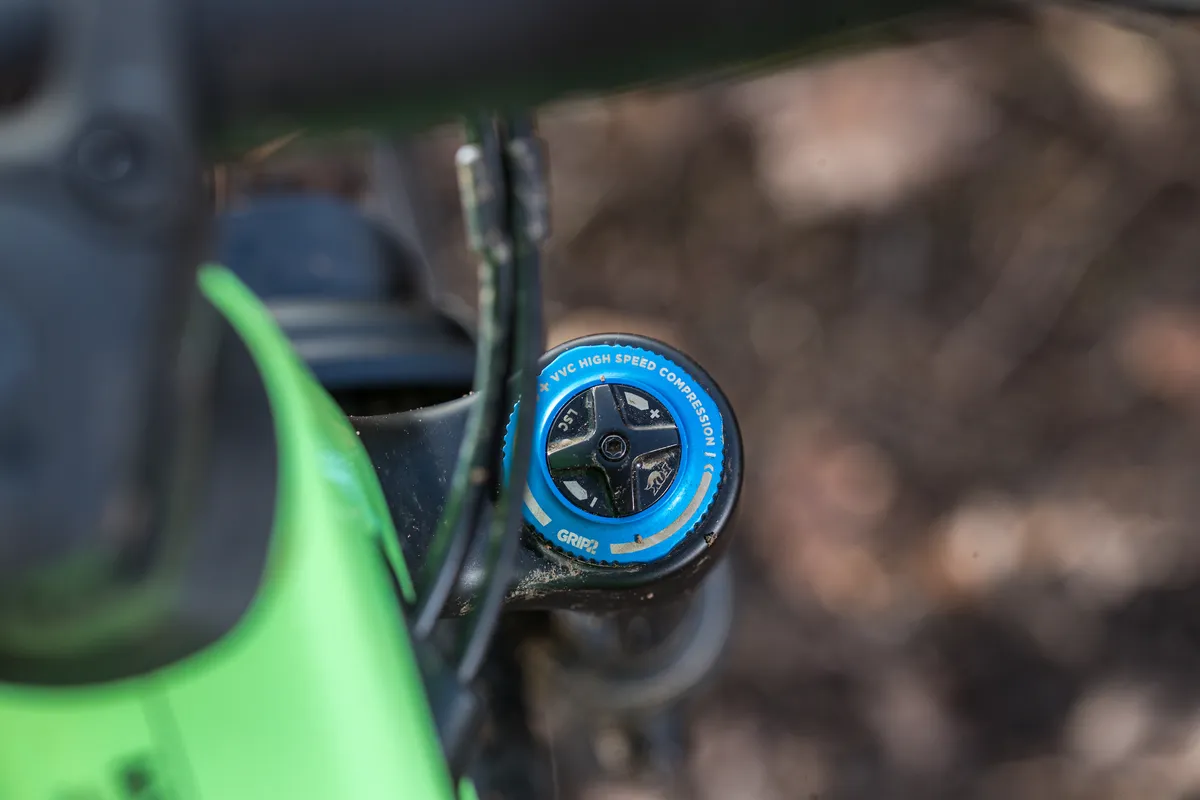
The bike rolls on a pair of DT Swiss XM1700 wheels. These are DT Swiss’s top alloy trail/enduro wheels, and come with a 30mm wide rim that offers plenty of support to the pair of Maxxis Minion tyres: a DHF at the front and DHRII at the back, both with the MaxxTerra compound.
Canyon provides the bulk of the finishing kit. This comprises of its Iridium dropper post (150mm on S and M, 170mm on L and XL), along with a G5 cockpit made up of a 40mm stem and 780mm bars (760mm on a Small). The saddle is an Ergon SM10 Enduro Comp.
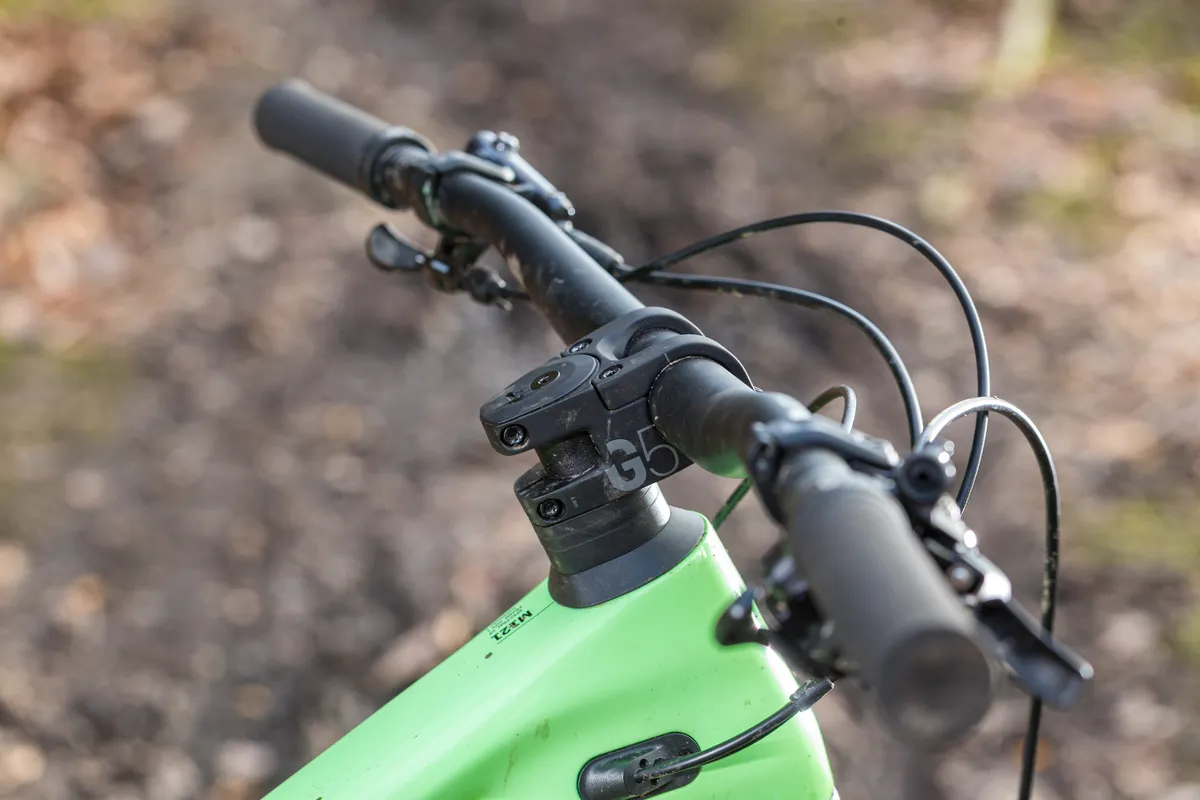
Canyon Spectral CF 29 8.0 ride impressions
The bike was tested on my usual test loops in the South West of the UK. This largely comprises wooded loops on loam, mud and hardpacked dirt trails, with rocks, roots, jumps and drops, as well as plenty of compressions.
Setting the bike up was painless. I ran the fork and shock fairly open, with only a couple of clicks of high-speed compression damping, and minimal low-speed. Rebound was set as fast as I could get away with, without the bike feeling unsettled.
The only issue I experienced was some cable rattle, but by loosening the entry and exit cable ports by the head tube, I was able to pull through cable slack, reducing this noise.
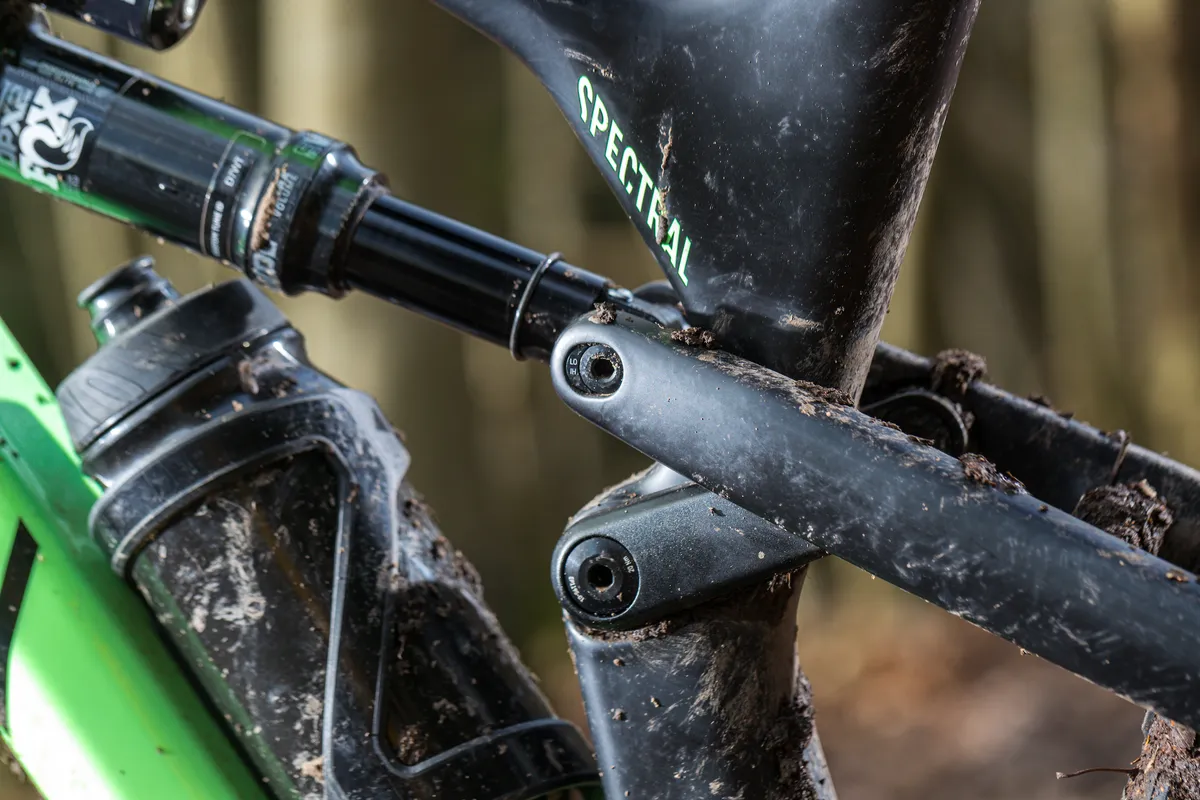
Canyon Spectral CF 29 8.0 climbing performance
One of Canyon’s own headlines for the bike is that the anti-squat on the Spectral has been modified to make it more climb friendly than before, with increased anti-squat figures in the early portion of the travel.
This certainly seems to resemble what’s felt on the trail, with a very stable feeling platform through which one pedals. The shock, even when fully open, barely moves while sat pedalling, and remains acceptably immobile when stood.
Obviously there’s some bob when stood up and mashing on the pedals, but this barely detracts from what is a very efficient feeling bike.
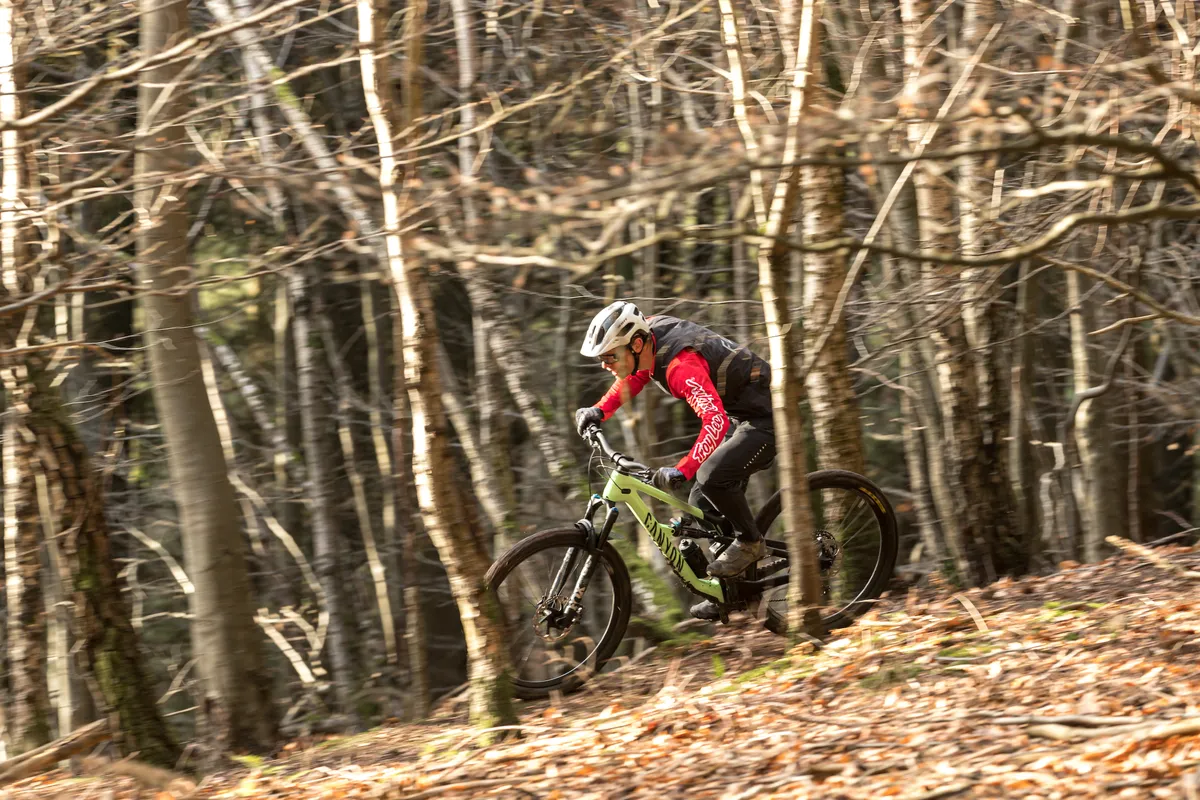
The alterations to the geometry are also noticeable. The longer top tube means the bike never feels cramped while sat, helping keep your chest open, and giving ample room over the bike to allow body-weight shifts to maintain traction on steeper sections.
The steeper seat angle is also of benefit, placing your hips better over the cranks on steep pitches. Although testing on technical climbs has been limited, the Maxxis Minion combo offers plenty of grip and I never felt the bike was too long or slack to be easy to manoeuvre around tight corners or up and over steps.
With the suspension so stable, jabs at the pedals to propel the bike over steps felt effective, and never left me wallowing in the travel.
That anti-squat platform didn't seem to compromise traction either, with the suspension having just enough suppleness to allow the tyres to do their job properly. Although there’s a compression switch on the shock, I never felt the need to stiffen the suspension for climbing.
Canyon Spectral CF 29 8.0 descending performance
Canyon’s Triple Phase Suspension has always impressed me, and it's is no different with the Spectral.
On flatter trails, the bike doesn’t completely isolate you from the ground, a function of the increased anti-squat. This means over small chatter and undulations the bike transmits these through the chassis as a gentle pattery feel.
However, that’s not to say the suspension isn’t working. The bike tracks the ground well, without getting unduly kicked about and opens into its later stroke smoothly and seemingly just at the right time. In essence, it’s just a bike that doesn’t feel like you’re sat on a sofa, completely disconnected from the ground.
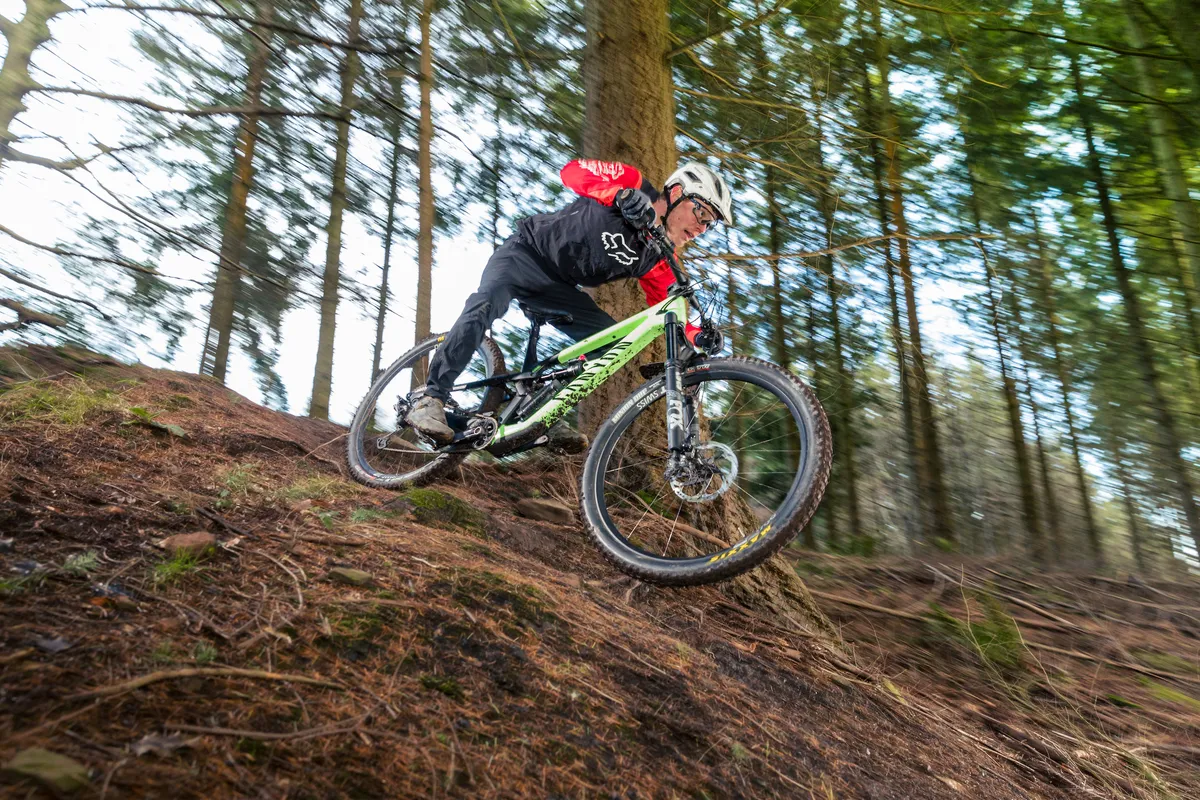
On these trails, when you need to put a pedal stroke in after a corner, or in the run-up to a jump, the Spectral reacts well, giving those bursts of speed that maintain the flow, while also avoiding getting bogged down in a messy, unsupportive mid-stroke.
Suspension pressures can be adjusted to give a perkier or softer ride, but I found 28 to 30 per cent sag to be the sweet-spot between that taught trail-bike feeling I'm after and a bike with suspension that complements the aggressive geometry the Spectral has.
When features get bigger and speeds increase, and the bike errs towards the latter part of its stroke, again the changes made to this generation Spectral’s kinematics impressed.
The bike progresses smoothly towards the end of its travel, reaching that 150mm when it’s needed, but in an utterly controlled manner. There’s no nasty bottom out, just an increasing ramp right towards the end of its stroke.
You can rattle the bike into rocks and over roots, or land awkwardly on a jump or drop, and it never seems to give it a moment's thought. Support through catch berms and in the transition of jumps is ample, meaning speed is easily maintained, or generated, as you push through the pedals.
This stellar suspension wasn’t exactly unexpected, and while it is improved for 2021, I found the suspension on the previous generation Spectral to be perfectly good too.
What’s changed then? Is it the updates to the geometry that make a palpable difference to how well the bike handles on steep, rough and loose tracks?
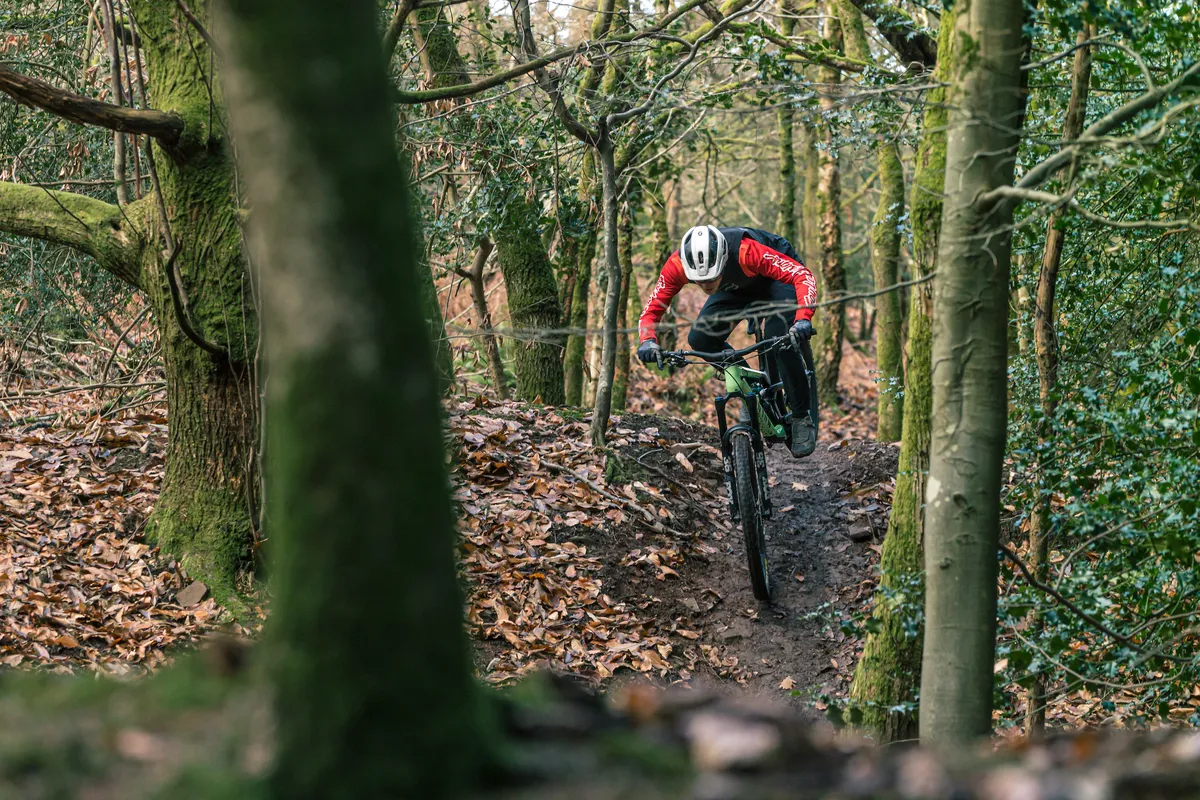
With a 64-degree head angle, the front wheel is far in advance of the bottom bracket, which itself is fairly far behind the head tube thanks to that longer reach. This gives a nice and long front-centre, and when paired with a bottom braacket that drops 30+mm below the axles the bike is nicely stable at speed.
The chainstays aren’t super-long at 437mm – perhaps if this was aimed more at the enduro crowd we’d see them longer – and this keeps the Spectral from feeling like an enduro barge.
This is certainly the case on the Large I tested, though it's worth bearing in mind that the chainstay length doesn't change between frame sizes, and so gets comparatively longer on the smaller bikes.
Despite that stability, it’s still more than happy being muscled round corners or flicked around stumps and rocks. Dropping the bike onto the tyre’s shoulder is easy, and when the Minion’s shoulder tread engages the dirt, the Spectral really seems to rail round corners with buckets of confidence.
The shorter head tube means that riders are more able to tune the front end height of their bike to match their preferences – I ran it slightly higher than I might usually, to give more control on the steep tracks that I’ve been testing on recently.
Though, for more mellow terrain, I’d consider dropping it a touch to get a little more weight bias over the front wheel. With that 160mm fork travel and 29in wheel, it’s possible to get the bars fairly high as it is. Likewise, the 20mm or so that’s been lopped off the seat tube is very appreciated, leaving you sat more ‘in’ the bike rather than ‘on’ it.
This means the dropper post’s dropped position is low between your thighs and there’s little risk of getting kicked in the backside by your saddle on the steeps.
Throughout testing I had no issues with the kit fitted to the bike.
The 2021 Fox 36 is an excellent fork, with a revised air spring that gives improved comfort and grip in its early stroke, while still providing plenty of support to push off against.
The chassis is more than stout enough for a trail bike, resisting twisting and binding. This feel is matched at the back with the DPX2 – a more than capable shock on the Spectral with enough adjustment to get it feeling right – and I had no issues with the stock tune.
Shimano’s XT drivetrain performed faultlessly, as did the brakes – no wandering bite point, plenty of power and decent lever feel.
DT Swiss’s wheels are among my favourites, and the alloy XM1700 wheelset caused us no issues whatsoever either.
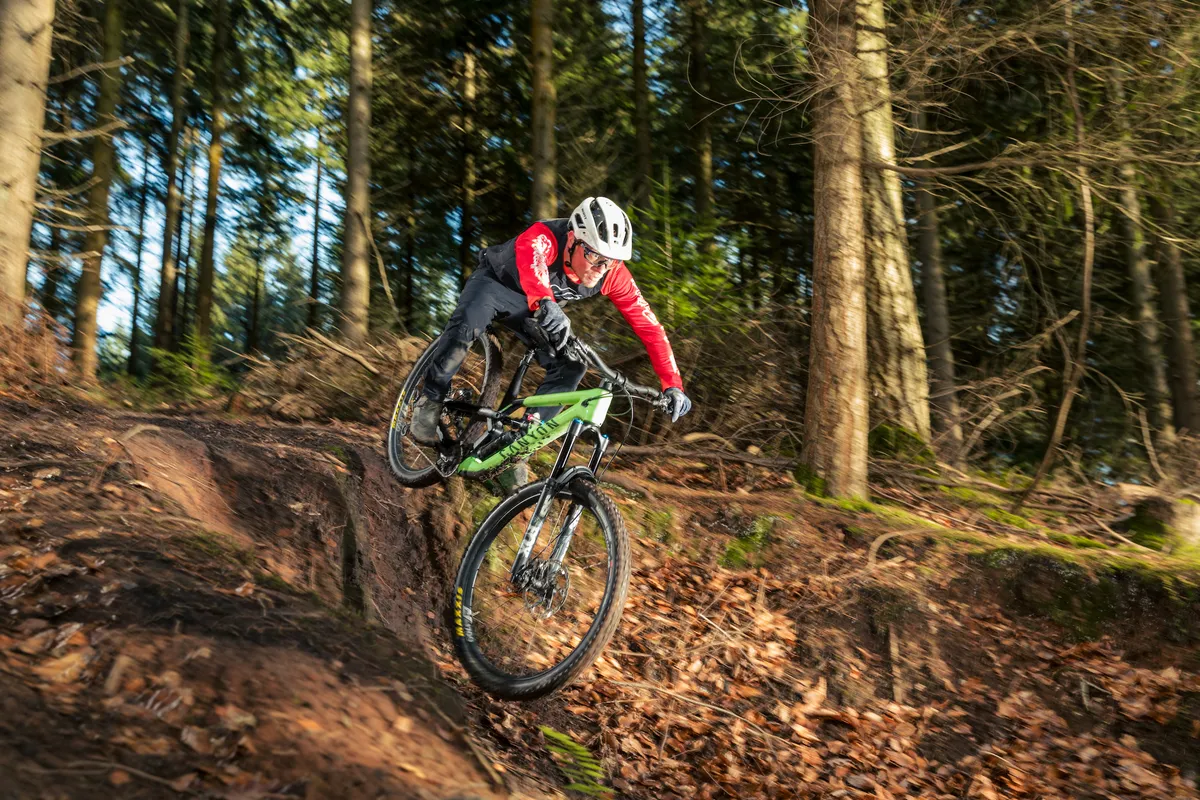
Canyon’s own G5 finishing kit also caused little concern. The bars, at 780mm, could be 20mm wider (giving you the option to chop them down to your preferred width), but they’ve a good shape and their transition to 31.8mm diameter certainly adheres to my views on the standards mountain bike brands should be using!
The stem’s top-loading design makes sense on paper too. If there’s anything to complain about, it would be the Iridium dropper post. There’s a little wiggle in it out of the box, which personally, while not noticeable when riding, isn’t something I’m a fan of.
Canyon Spectral CF 29 8.0 bottom line
A 150/160mm bike deemed a ‘trail’ bike might be pushing the definition a little, but take it for what it is and the Spectral is an incredibly capable machine. I’d go so far as to say it’s one of the most capable trail bikes on the market today.
I’d defend Canyon’s decision to market the Spectral as a trail bike too. This isn’t a soft, sofa-like enduro bike that sucks up every bump and completely isolates you from the trail, it’s too taught for that, too responsive under power and too happy being pedalled up a hill – if that makes sense.
I’d happily ride the Spectral in an enduro race, but I reckon a ‘proper’ enduro bike with such ground-hugging capabilities would be faster. However, such a bike would be compromised in other situations.
The best trail mountain bikes should be just as happy hammering through your local woods as it would be on a two-hour alpine climb, or six-hour cross-moor epic. Even in its ‘bigger’ guise, the Spectral is happy doing all those things, and I suspect that the 150mm forked versions (the 7.0 and 9.0) would be even happier doing so.
As such, it feels like this generation Spectral is one of the least compromised bikes I’ve ridden and, by extension, one of the best trail bikes on the market.
I’m sticking my neck on the line and saying that this generation Spectral should be right at the top of your next-bike shortlist.
Product
| Brand | canyon |
| Price | 4149.00 GBP,4699.00 USD |
Features
| Fork | Fox 36 Performance Elite |
| br_stem | Canyon G5 |
| br_chain | Shimano XT |
| br_frame | Spectral CF |
| Tyres | Maxxis Minion DHF/DHR II |
| br_brakes | Shimano XT 4-pot |
| br_cranks | Shimano XT |
| br_saddle | Ergon SM10 Enduro Comp |
| br_wheels | DT Swiss XM1700 |
| br_shifter | Shimano XT |
| br_cassette | Shimano XT |
| br_seatpost | Canyon Iridium |
| br_gripsTape | Ergon |
| br_handlebar | Canyon G5 |
| br_rearShock | Fox DPX2 Performance Elite |
| br_bottomBracket | Shimano XT |
| br_availableSizes | S, M, L, XL |
| br_rearDerailleur | Shimano XT |
